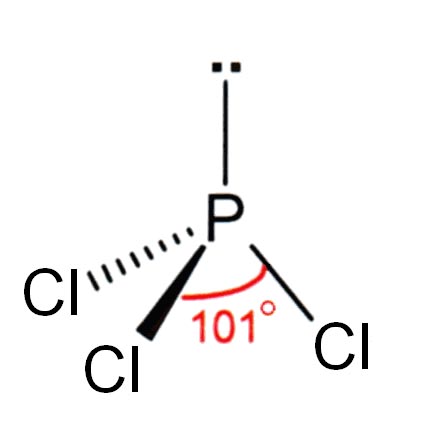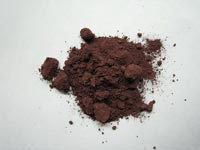|
Phosphorus manufacturers, Chemicals manufacturing Companies, India,
exporter, cas No. 7723-14-0 Phosphorus suppliers, Chemicals, india,
companies, Chemicals Drug from India, Phosphorus import, Chemicals, india,
Phosphorus export, Chemicals, india, Phosphorus buyer, Chemicals, india,
Phosphorus seller, Chemicals, india,IP,BP,USP,EP, Phosphorus manufacturer,
Chemicals, india, Phosphorus dealers, Chemicals, india, Phosphorus producer,
Chemicals, india, Phosphorus, Chemicals, Chemical ingradients Purchase,
Cheap, Lowest, Price, COA,wholesalers, Chemical india, Phosphorus suppliers,
Chemicals india, Phosphorus trader, Chemicals, india, Phosphorus purchase,
Chemicals, india, Phosphorus structure, chemicals, Phosphorus benefits,
Phosphorus pharmacy, drugs, & Chemicals review, definition of Phosphorus,
Phosphorus synthesis, Phosphorus salt, effects of Phosphorus, clinical
advantage of Phosphorus, polymorphs of Phosphorus, preparation of
Phosphorus, efficacy of Phosphorus, beneficial effects of Phosphorus,
determination and validation of Phosphorus, determination and validation of
Phosphorus, Phosphorus -Phosphorus, side effect of Phosphorus, polymorphs of
Phosphorus, level of Phosphorus, Phosphorus, process for preparing
Phosphorus, Phosphorus mg, process for Phosphorus, detailed info for
Phosphorus, catalog Phosphorus, polymorphs of Phosphorus, dosage, chemicals
of Phosphorus, intermediate of Phosphorus, Phosphorus powder, supply
Phosphorus, Taj Pharmaceuticals Limited., chemicals manufacturers India,
manufacturers of industrial chemicals, chemicals suppliers, chemicals
offers, chemicals wholesalers, exporters chemicals, specialty
chemicals, chemicals Phosphoruss, indian chemical suppliers, chemicals
india company, Indian chemical manufacturers association, chemical
industries in India, indian chemical company, chemical factories india,
safety Phosphoruss manufacturers India, plastic Phosphoruss manufacturers
india |
|
|
|
|
 |
|
Phosphorus
CAS number 7723-14-0


PRODUCT IDENTIFICATION
PHOSPHORUS
EINECS NO. 231-768-7
FORMULA P4
MOL WT. 123.88
H.S. CODE 2804.70
TOXICITY
Oral rat LD50: 3030 ug/kg
SYNONYMS Phosphorus (white); Phosphorous yellow; Phosphorus (red);
Black Phosphorus; Fosforo Bianco (Italian); Gelber Phosphor (German);
Phosphore Blanc (French); Phosphorous (White); P Tetrafosfor (Dutch);
Tetraphosphor (German); Violet Phosphorus; Weiss Phosphor (German)
GENERAL DESCRIPTION
Phosphorus is a nonmetallic chemical element in group 15 (nitrogen
family, formerly Va) of periodic table; atomic number 15 atomic mass
30.9738; melting point ca 44.1 C (white); boiling point ca 280 C
(white); specific gravity 1.82 (white), 2.34 (red), 2.70 (black);
valence -3, +3, or +5 ; electronic config. 2-8-5 or 1s 22s 22p 63s 23p
3.
The phosphorus molecule is composed of four phosphorus atoms, P4.
Phosphorus exists in a number of allotropic forms [white (alpha and
beta), red, black and/or violet] in the same physical state. White
phosphorus is a white to yellow waxy substance which ignites
spontaneously in air to form white fumes of phosphorus pentoxide and
glows without emitting heat.
Phosphorus is stored underwater as it is extremely poisonous, insoluble
in water (but soluble in carbon disulfide). Commercial production of
elemental phosphorus is prepared from phosphorite or phosphate rock
(apatite, an impure calcium phosphate mineral) reacting with coke and
sand or silica pebblesor at high temperatures in an electric furnace.
Calcium silicate is produced as a by-product. White phosphorus is used
as a deoxidizing agent in the preparation of steel and phosphor bronze.
It is also used in rat poisons and to make smoke screens (by burning)
for warfare. When white phosphorus is heated to about 250 C with air
absence, it changes into the red phosphorus.
Red phosphorus, a dark redish powder or crystal, does not ignite
spontaneously unless heated to 200 C, does not phosphoresce and it is a
little less dangerous than white phosphorus. It is used to make matches.
Red phosphorus is prepared commercially by heating calcium phosphate
with sand and coke in an electric furnace. Black allotrope is obtained
industrially by heating at 300 C under pressure with a mercury catalyst.
It has a layer structure and is stable.
The major use of phosphorus compounds is in fertilizers, mainly as a
mixture called superphosphate (calcium hydrogen phosphate), obtained
from phosphate minerals by sulfuric acid treatment; and in
nitrophosphates. Phosphorus is burned to make phosphorus pentoxide [phosphorus(V)
oxide], a white solid used as a chlorinating agent in organic chemistry,
as a drying agent and mainly converted to phosphoric acid used to make
phosphates for fertilizers, electro chemical polishing and shaping,
electroplating, metal cleaning and pickling in metal treatment by
reaction with water. Phosphorus is highly reactive.
A wide range of compounds is formed for uses in detergents, water
softeners, pharmaceuticals, dentifrices, and in many other important
applications. It forms metal phosphides and covalently bonded
phosphorus(III) and phosphorus(V) compounds. Phosphoric acid can combine
with certain alkaline elements to form salts called phosphates.
PHYSICAL AND CHEMICAL PROPERTIES
PHYSICAL STATE a number of allotropic forms
MELTING POINT 44 C (white), 590 C (red)
BOILING POINT 280 C (white), sublimes (red)
SPECIFIC GRAVITY 1.82 (white), 2.34 (red), 2.70 (black)
SOLUBILITY IN WATER insoluble
pH
VISCOSITY VAPOR DENSITY AUTOIGNITION NFPA RATINGS
Health: 3 Flammability: 0 Reactivity: 1
REFRACTIVE INDEX FLASH POINT
30 C(white), 260 C(red)
STABILITY
Stable under ordinary conditions
APPLICATIONS
Phosphoric acid, sodium phosphates, calcium, ammonium and potassium
phosphates, phosphorus trichloride, pentasulfide and pentoxide.
SALES SPECIFICATION WHITE/YELLOW PHOSPHORUS APPEARANCE
white to straw yellow waxy solid
ASSAY 99.0% min
INSOLUBLES IN DILUTE NITRIC ACID
0.1% max
ACIDITY (H3PO4)
0.2% max
SULFUR
0.1% max
RED PHOSPHORUS APPEARANCE
red to violet amorphosus powder
ASSAY
98.5% min
SOLUBLES IN WATER
1.0% max
WHITE PHOSPHORUS
0.003% max
MOISTURE
0.25% max
ACIDITY (H3PO4)
0.1% max
HAZARD CLASS
4.2, 4.1 UN NO. 1381 (yellow), 1338 (red)
Uses
In recent years, concentrated phosphoric acids, which may contain as
much as 70% to 75% P2O5 content, have become of great importance to
agriculture and farm production. World-wide demand for fertilizers has
caused record phosphate production. Phosphates are used in the
production of special glasses, such as those used for sodium lamps.
| |
|
Note /Government
Notification: These chemicals are designated as those that are used
in the manufacture of the controlled substances and are important to
the manufacture of the substances. For any (Control Substance)
products Import and Export *** subjected to your country government
laws /control substance ACT.
Information: The information on this web page is provided to help
you to work safely, but it is intended to be an overview of hazards,
not a replacement for a full Material Safety Data Sheet (MSDS). MSDS
forms can be downloaded from the web sites of many chemical
suppliers. ,also that the information on the PTCL Safety web site,
where this page was hosted, has been copied onto many other sites,
often without permission. If you have any doubts about the veracity
of the information that you are viewing, or have any queries, please
check the URL that your web browser displays for this page. If the
URL begins "www.tajapi.com/www/Denatonium Benzoate.htm/" the page is
maintained by the Safety Officer in Physical Chemistry at Oxford
University. If not, this page is a copy made by some other person
and we have no responsibility for it.
The Controlled Substances Act (CSA) was enacted into law by the
Congress of the United States as Title II of the Comprehensive Drug
Abuse Prevention and Control Act of 1970.[1] The CSA is the federal
U.S. drug policy under which the manufacture, importation,
possession, use and distribution of certain substances is regulated.
The Act also served as the national implementing legislation for the
Single Convention on Narcotic Drugs |
|
|
|
|
|








